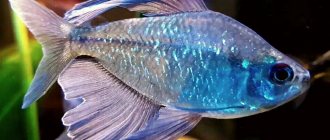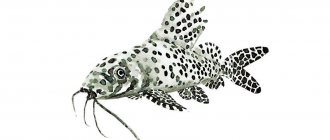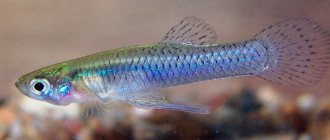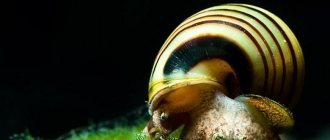Recently, you can buy a variety of exotic fish in pet stores. One of the most unusual, but very remarkable inhabitants of aquariums is the dwarf tetradon. Many people know very little about this cute and funny fish, so they often make mistakes when keeping them.
HABITAT IN NATURE
In recent years, a lot of fish native to India have appeared. These include the denison barb, the dario dario and many other, not yet so popular species. But standing apart from them is the dwarf yellow tetradon. They are originally from the state of Kerala, in southern India. They live in the Pamba River, which flows from the mountains and empties into Lake Vembanad (where they also live). The Pamba River is slow-moving and rich in vegetation. This means that the dwarf tetradon is a completely freshwater fish, unlike all its relatives, who at least need salted water.
Description and features
The appearance and behavior of the dwarf tetradon (lat. Carinotetraodon travancoricus) makes it a very attractive and sought-after fish. The body is pear-shaped with a transition to a large head. It is quite dense with small spines that are not visible when the fish is calm, but if it is scared or worried about something, the fish
inflates like a ball and spikes become a weapon and protection.
However, such frequent transformation of it negatively affects health and it is impossible to specifically frighten the tetradon.
At the same time, the size of the dwarf tetradon reaches 2.5 cm. The anal fin is poorly expressed, the others are expressed by soft rays. Relative to the body, the fins look miniature and very mobile, like the wings of a hummingbird
.
The fish has large, expressive eyes that amaze with their mobility, but if the tetradon is looking at something, they will stand almost motionless.
Fish mouth
somewhat reminiscent of a bird's beak, with fused premaxillary and jaw bones, however, the fish is predatory and also has 4 plates of teeth, located two at the bottom and at the top.
Distinguishing a male from a female is a very difficult task. Sexually mature male tetradons are usually brighter in color than female fish of the same age and have a dark line along the belly. Tetradons come in a variety of colors, some of which form the names of the varieties of these fish.
Popular varieties of tetradon
Tetradons belong to the Pufferfish family. Fish of unusual appearance can be found in the regions of South and Southeast Asia: Thailand, Malaysia, Myanmar, Cambodia, India, Vietnam, Sri Lanka, Indonesia and Singapore. Adults inhabit freshwater bodies of water and rivers, which may have varying degrees of salinity. Young tetradons can only be found in brackish waters off the coast.
There are about 100 species of these fish in nature. The most popular of them:
- African. The inhabitants of the African Congo River reach a length of 10 cm. The fish are characterized by a light brown color, only the abdomen has a yellow tint. Dark spots are randomly scattered throughout the body.
- Eight. This species is found in the reservoirs of Thailand. It is distinguished by large eyes and a wide frontal part. The color of the figure-eight tetradon resembles that of a tiger. The body is characterized by black or brown color. The entire body is covered with yellow spots and curving lines. The color of fish may change with age.
- Green or spotted (Tetraodon nigroviridis). An interesting species can be found in salty waters in Southeast Asia. The fish reaches a length of 17 cm. Tetradon is characterized by a green color with black spots and a white belly.
- Dwarf or yellow (Tetraodon lorteti Tirant). Indonesia, Malaysia and Indochina can boast of colorful fish. Dwarf tetradons inhabit quiet rivers and ponds with standing water. The color of males and females differs: males have a bright red abdomen and beautiful longitudinal stripes, while females have a light color and small stripes along the body. They grow no more than 6 cm in length.
- Kutkutya (Tetraodon cutcutia). The fish reaches 10 cm in length and lives in salted water. Males are green in color, while females are yellow in color. The sides are decorated with mesh patterns. Fish prefer to spend a lot of time in the shade, so it is necessary to make a lot of shelters for them.
- Figured (Tetraodon biocellatus). This variety is common in Russia. Figured tetradons live in the fresh waters of small rivers and canals in Southeast Asia. The predators grow no more than 10 cm, are characterized by a snow-white abdomen and chic patterns of yellow and green shades on the upper part of the body. The back can be decorated with spots, stripes, circles and various lines.
All species of tetradons belong to the family of four-toothed predators. Because they produce toxins, they should be handled with care: they should not be handled with bare hands, and the fish should be fed using tweezers.
Tetradon kutkutya, in its normal state, looks more like a dark yellow rectangle, with many dark spots without a specific shape.
Each variety differs not only in color, but also in its maintenance rules. Aquarists most often keep green tetradons, which are less problematic to care for.
Content
Taking into account the characteristics of tetradons, the following conditions can be distinguished for their comfortable life in an aquarium: Availability of clean fresh water. Individuals do not tolerate even slightly salted water; this can cause them to quickly die. On average, 5-7 liters of water is enough for one tetradon to live, sufficiently balanced in the amount of nitrates and ammonia (fish are sensitive to them). Maintaining sufficient temperature. Since they come from India, to keep them the water temperature must be kept constantly warm - about 23-26 degrees. Aquarium water must be clean.
Tetradons can easily eat only the required amount of food and leave the leftovers to rot. It is recommended to use a filter, and do not forget to fill it with clean water (about 20% of the total mass per week). Arrange the “interior” of the aquarium. These fish love to hide in plants and swim among snags, so you should take care of their presence in advance. In general, we can say that tetradons are quite unpretentious fish, they are able to adapt, you just need to take into account their unique characteristics. They prefer balance, so when it comes to arranging their home, you just need to avoid extremes. You should also remember that they are far from expert swimmers; it is not recommended to create a strong current in the water (do not use strong filters).
How to keep tetraodon
In order for the bubble fish to feel comfortable, it needs to create favorable conditions. They consist in selecting the right aquarium, equipment, design and regular care for the quality of water and cleanliness of the soil.
Arrangement of the aquarium
- Volume – from 150 l. The minimum allowable is from 110 l. If the fish has neighbors, then the larger the volume, the more comfortable it will be for all inhabitants. The exception is dwarf species of tetradons; tanks from 50 liters are suitable for them;
- Soil is very important for tetradons. Since these are voracious fish, waste products appear in large quantities. The soil helps the water stay clean longer. Fraction – any, ideally 3-5 or 5-7 mm;
- Filtration is extremely important to keep these fish healthy. Therefore, special attention should be paid to the choice of filter;
- Aeration – moderate, round the clock;
- Lighting – dim, subdued;
- Decor for tetraodons is unimportant. You can use any design elements: stones, driftwood, ceramic pipes. It will be nice if the tetradon can find a secluded place among the decor and hide. For some species, grottoes are a necessary measure;
- Living plants are welcome as they create secluded corners. It is better to plant them denser so that the plants form thickets;
- A lid on the aquarium is desirable.
Water parameters
- Temperature 23-28°C, depending on the type;
- Hardness 2-19°;
- Acidity 6.5-7.5 pH.
Maintenance and care
Water pollution must not be allowed, therefore:
- Mandatory regular cleaning of the soil, timely washing of the filter;
- Weekly change of 1/4 volume of water;
Nutrition
The biggest difficulty in keeping dwarf tetradons is proper feeding. No matter what the pet store tells you, fish don't touch pellets or flakes. In their natural habitat, they feed on invertebrates, snails and small insects. Therefore, at home you will have to provide them with the same diet, otherwise they will starve.
The best food options are squid (frozen) and small snails (melania, frieza). Tetradons will not refuse bloodworms, artemia and daphnia. Although they still prefer live food, which they can hunt for.
Whatever food you choose, the basis of your fish’s diet should be snails. They not only get enough of them, but also grind their teeth on their shells. This food will not be enough for a long time, so it is better to grow arthropods in another container and plant them in the aquarium with the tetradons as needed. It should be taken into account that fish will ignore large snails.
It is recommended to feed pets twice a day, giving food in small portions. Fish are prone to overeating, so there is no need to be overzealous.
Feeding
To prevent tetraodons from eating their relatives or neighbors in the aquarium, you should not feed them dry food; they only accept meat food. Boiled and chopped heart or chopped liver are ideal, beef meat, of course, you can feed them with live food: mealworms and earthworms, mosquito larvae, fresh shrimp, small fish. We must not forget about mollusks, which tetraodons eat with great pleasure, because they enjoy not only the meat of snails, but also the process of biting the shells. By biting through the shell, tetraodons wear off their continuously growing sharp tooth plates. Portions of meat food are calculated depending on the size of the inhabitants of the aquarium.
But the most peaceful inhabitant of any freshwater aquarium is the leopard tetraodon. Even males, who by nature have a sense of aggression, do not have the habit of attacking nearby aquarium residents in order to protect their family, and most importantly, their offspring.
—— fish.mongabay.com/species/Tetraodon%20steindachneri.html www.fishbase.org/summary/speciessummary.рhp[question]id=11270 badmanstropicalfish.com/profiles/profile31.html www.seriouslyfish.com/profile.php ?genus=Carinotetraodon&species=lorteti&id=861
Compatibility
The dwarf tetradon is a very quarrelsome neighbor that will not leave other inhabitants of the aquarium alone. Therefore, it is better to keep such fish separately, especially since they do not need a large displacement. Tetradons are very territorial, and in the fight for their space they can be extremely aggressive. This often results in the death of their rivals, even if they are larger. Among those with whom pufferfish predators can exist in peace for some time: otocinclus and shrimp.
A fairly large flock of tetradons can live in one aquarium, but only if there is a sufficient amount of food and shelter.
Adviсe
- Do not provoke fish to swell into a ball, because this is a protective mechanism that is accompanied by severe stress. Do not disturb the fish unless necessary, do not knock on the glass or touch them.
- If the fish behave like spawning, but you do not see eggs, walk along the ground with a small hose. There will be eggs among the drained water.
- Store-bought frozen food is not the best option, since the aquarist has no knowledge of the quality of the food and how it was stored. A safe option is to make homemade frozen food. Freezing as a method of processing fish food is very effective.
- Wash your hands when handling the aquarium. Cleaning equipment must be free of traces of detergents.
Dwarf tetradons are said to be poisonous. Large animals that eat them die due to the poisonous mucus or fish needles. If you need to come into contact with tetradon, make sure that there are no scratches or other damage on your hands.
Previous
Fish Tips for keeping a large cleaner - brocade catfish!
Next
FishWhat you need to know to breed barbs in an aquarium
Reproduction
Dwarf tetradons form a short-term pair of a male and a female and arrange preliminary games. The male, having fluffed out his dorsal and ventral crests, circles around the female. If she reciprocates, she will follow the male to his designated spawning location, lay her eggs and swim away. The male will remain to fertilize her. This procedure can be repeated several times. The male usually chooses a spawning site in dense thickets of plants or in thickets of aquarium mosses. The area with the laid eggs will be such that the male can protect it from other annoying males.
The male dwarf tetradon will guard the territory with eggs and ventilate it until the young hatch. Females do not take any part in caring for eggs and raising offspring. The fry are born large enough for such a small fish, and are immediately able to take newly hatched brine shrimp, although not all fry are born so large. Hobbyists often manage to breed tetradons at home.
Breeding
For breeding, it is necessary to use a special reservoir - a spawning tank - where the desired pair or several females and one male are placed. First, you need to place a lot of thin-leaved plants in this tank and set the water temperature to no higher than 25°.
After the fish are relocated, a few days before spawning, the portions of the future parents should be increased, feeding them a large amount of protein food.
A signal that the fish are ready to spawn will be the bright coloring of the male. Then he begins to court the female, chasing her throughout the aquarium and driving her into the thickets, where she will spawn. One dwarf tetradon litter contains up to 20 eggs. They are colorless and small.
Keeping the fry
Tetradon caviar is transparent, up to approximately a millimeter in size. On average, one female produces about a hundred eggs. Parents are not sentimental and may well eat their future offspring.
Experienced aquarists collect fertilized eggs using a pipette or other devices and send them to safer conditions. In this case, milky white eggs are rejected; most likely they are unfertilized or diseased. A small cage with water from a community aquarium will be enough for the fry to appear. Temperature and other requirements are the same as described earlier, a special filter is needed, without the risk of absorbing eggs or fry. Algae and moss from the parent site will also be useful.
You should wait about a week and larvae will appear from the eggs - future tetradons. For the first three days they do not need feeding from reserves from the yolk sac. Having settled in a new place, the fry more and more resemble brave little ones - tetradons; fine food such as ciliates and microworms will ensure their further development, and after a month, the little ones will try “adult” food for the first time - frozen bloodworms.
After two months, they reach a length of one centimeter and can themselves hunt small inhabitants of their environment.
Differences between a male and a female
Males are smaller in size than females, with a dark line running along their entire white abdomen and a ventral crest that they raise during mating. The male may also be darker in color. There is also a dorsal crest, but it is difficult to see due to insufficient coloration. Both crests will be straightened during the male's courtship with the female, and will also acquire a yellow color. Males also have developed folds behind the eyes, which is not observed in females.
Females tend to be more rounded, slightly larger than males, and may have more spots on the bottom.
Diseases
This small predator gets sick very rarely. Most often, the cause of illness is improper care and poor living conditions. Poisoning with ammonia compounds. The gills suffer the most; they become inflamed, turn red and increase in size. The fish breathes with difficulty and prefers to stay close to the surface. The problem can be eliminated by installing a good filter, frequent water changes, siphoning the bottom and adding zeolite to the water - a drug that absorbs excess ammonia. Nitrate poisoning. A sick fish first becomes agitated, moves erratically, and reacts to the slightest stimuli.
Then convulsions develop, the tetradon goes to the bottom. All his fins and gills are spread out, his mouth is open. Sick fish should be immediately placed in a temporary aquarium with clean water, and in a permanent aquarium, thoroughly siphon the bottom, replace half of the water with fresh water, rinse the filter and add substances that neutralize nitrates. Dropsy. The tetradon's abdomen is strongly inflated, and its scales are raised. The color loses intensity and brightness. Most likely, your tetradon is lacking food. Increase the diet, improve its quality, switch the fish only to live food and be sure to feed snails. Lifespan If kept in good conditions, the tetradon can live for about 5 years.
Habitat in nature
The green tetraodon was first described in 1822 and is now known by two names: Dichotomyctere nigroviridis and Tetraodon nigroviridis. It lives in Africa and Asia, its range extends from Sri Lanka and Indonesia to northern China. Also known as Tetraodon nigroviridis, ball fish, puffer fish and other names.
Adults of D. nigroviridis are found in freshwater streams, rivers and floodplains; young ones - in brackish water. They are also found in mangrove forests. Their diet consists mainly of snails, but includes crustaceans and some plant materials. They also cut off the scales and fins of other fish. Its flesh contains a poisonous toxin and should not be eaten.
D. nigroviridis also has some value as a laboratory animal, particularly in genetics, because it has the same number of genes as humans, but in a genome about one-tenth the size. Nigroviridis has the smallest known genome of any vertebrate, approximately 340 million base pairs, and has thus been chosen as a model organism for genetics. In 2004, a draft genome sequence was published.











